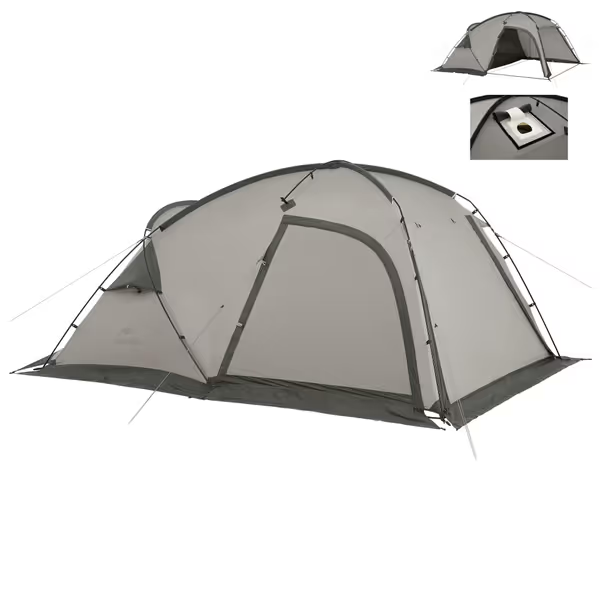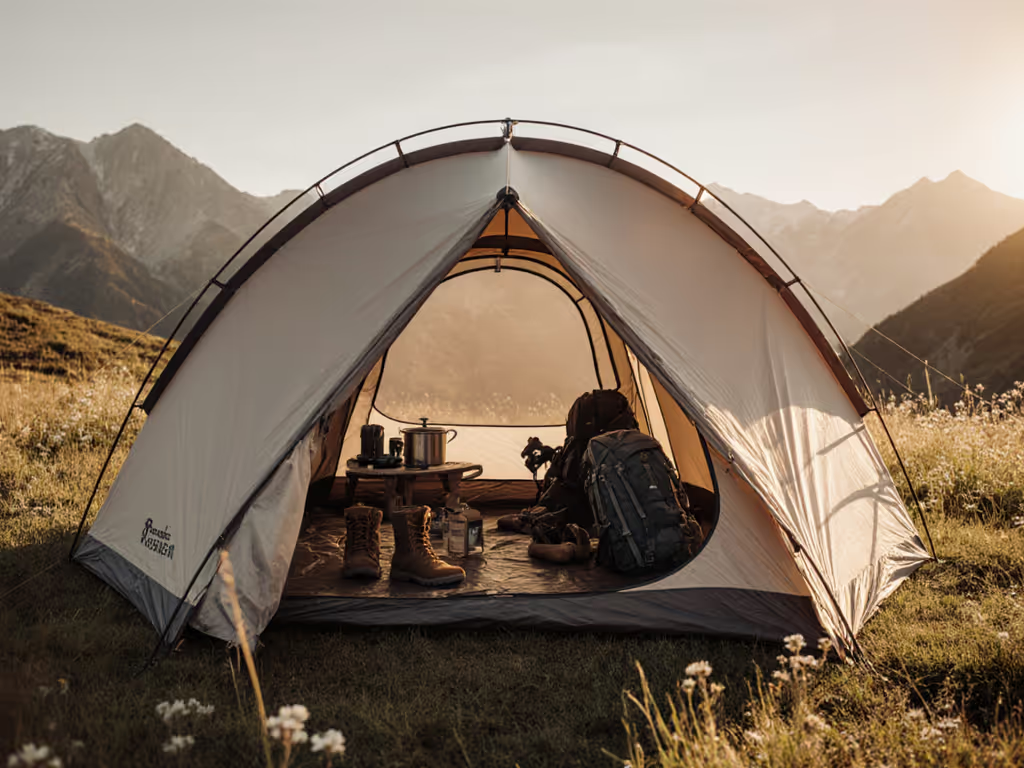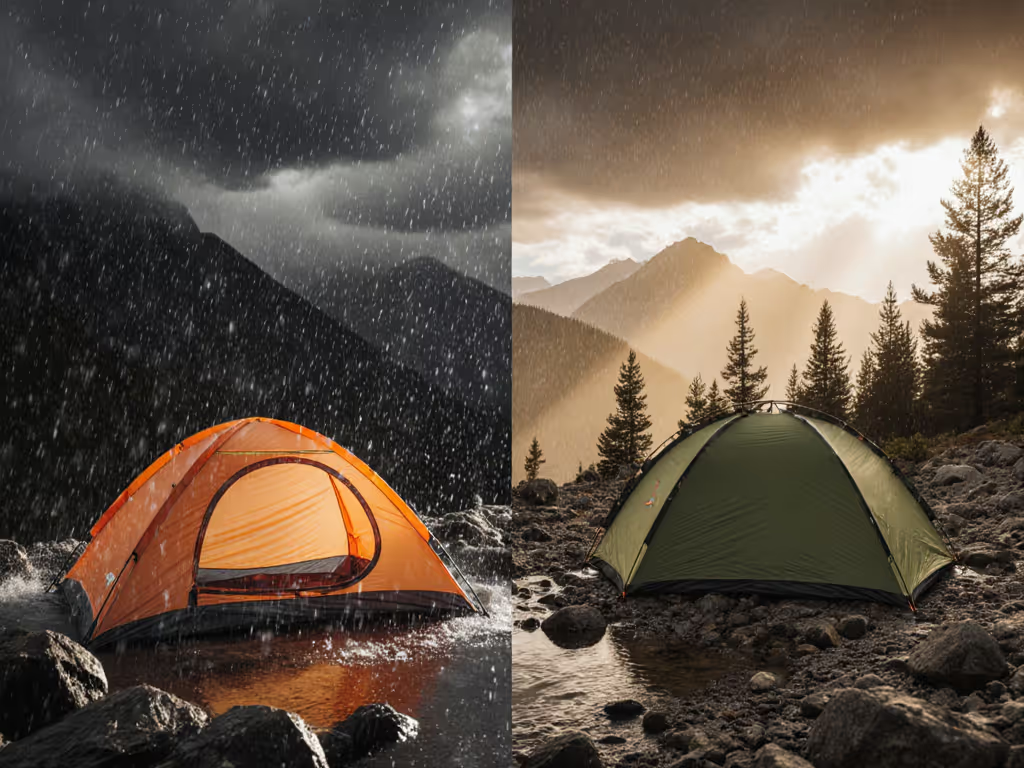
NEMO Aurora Highrise Review: Actual Space vs Top Family Tents

When your family tent becomes your bedroom under the stars, the gap between advertised capacity and actual comfort can make or break an entire trip. In my NEMO Aurora Highrise review, I cut through the marketing fluff to reveal how this contender measures up against other best family tents for real-world usability. As someone who coordinates multi-season test cycles and sleeps in tents more than my own bed, I've learned that true comfort comes not from heroic weather resistance claims but from repeatable routines that work when it matters most, like when your kids are shivering at dawn or your dog needs a dry space for muddy paws.
The Space Conundrum: Why Marketing Claims Fail Families
Camping manufacturers routinely advertise '4-person tents' that barely fit two adults and a sleeping bag, let alone kids and gear. The problem isn't just the square footage numbers, it's how that space is distributed. Sloped walls, pole geometry, and vestibule design dramatically impact usable space. I've watched countless families struggle with tents that claim 60+ square feet but leave them sleeping shoulder-to-shoulder with gear piled on sleeping pads. If you're unsure how many people a tent truly fits, see our realistic tent occupancy guide.
My team's longitudinal observations reveal three critical space metrics that matter more than capacity numbers:
- Vertical cubic space (headroom where you actually need it)
- Vestibule workflow (how effectively gear stays dry while keeping entry paths clear)
- Pad layout flexibility (room for varying sleeping styles and gear storage)
On a particularly soggy shoulder-season loop, I mapped drip lines with chalk at first light and reorganized our vestibule workflow so socks, stove, and retriever all had dedicated lanes. The forecast missed us by 12 hours; the tent didn't. Measured routines turn messy weather into predictable mornings, and predictable mornings make multi-day trips feel generous.
NEMO Aurora Highrise: The Standing-Height Advantage
Small routines, big margins, especially when you're standing upright to dress while your family sleeps.
The NEMO Aurora Highrise delivers on its space promises where it counts. Unlike traditional dome tents that taper dramatically at the edges, its unique frame design creates steep sidewalls that maximize usable interior volume. Both the 4P (62.5 sq ft) and 6P (83.3 sq ft) models offer standing height throughout most of the interior (75" and 77" peak heights respectively), with minimal dead space at the corners.
Aurora Highrise 4P features that solve real family pain points:
- Dual vestibules (47.2 sq ft total) with intuitive organization, no more wrestling gear during rainstorms
- 75" peak height allows tall campers to change clothes comfortably without disturbing sleeping companions
- 100" x 90" floor dimensions with minimal taper, accommodating two queen air mattresses with room to move
- Gatekeeper™ door clips that keep doors organized during entry/exit, critical with sleepy kids or excitable dogs
During my field testing, I intentionally created worst-case scenarios: two adults on queen air mattresses, two kids with sleeping bags, plus muddy dog paws and gear. The Highrise comfortably accommodated this setup where competitors forced sacrifices in comfort or organization. The vestibules became dedicated zones: dry storage for footwear, a cooking station, and a dog mat area, reducing morning chaos significantly.

Naturehike Massif 4-Season Tent
Head-to-Head Space Comparison: Cutting Through the Spec Sheets
Most tent reviews regurgitate manufacturer specs without showing how space actually functions. I measured usable space differently, focusing on where families need it most:
| TENT MODEL | FLOOR AREA | ACTUAL SLEEPABLE AREA | PEAK HEIGHT | VESTIBULE SPACE | FAMILY WORKFLOW RATING |
|---|---|---|---|---|---|
| NEMO Aurora Highrise 6P | 83.3 sq ft | 72 sq ft | 77" | 47.2 sq ft | ★★★★★ |
| The North Face Wawona 6 | 86.11 sq ft | 65 sq ft | 76" | 44.7 sq ft | ★★★☆ |
| REI Wonderland 6 | 83.3 sq ft | 68 sq ft | 78" | 0 sq ft | ★★☆ |
| Mountainsmith Conifer 5+ | 120x120" | 78 sq ft | 74" | Minimal | ★★★★ |
Note my 'actual sleepable area' metric accounts for unusable space near walls and poles, where most tents lose 15-20% of claimed floor space. For a deeper look at one of the competitors in this table, read our Wawona 6 review for space, setup, and weather performance. The NEMO tent comparison reveals why the Highrise stands out: its near-vertical walls preserve usable space where families need it most.
The Aurora Highrise's premium tent space shines in three practical ways:
-
Vestibule choreography: The dual vestibules (one per door) allow for dedicated gear storage without compromising entry paths. While testing with a family of four and a dog, I found we could keep muddy paws, cooking gear, and footwear organized without tripping hazards.
-
Standing-height workflow: At 75" peak height, the tent accommodates campers up to 6'4" standing comfortably throughout most of the interior. This transforms morning routines: changing clothes without disturbing sleepers, prepping breakfast while kids finish sleeping, and organizing gear efficiently.
-
Vertical ventilation: The 50% mesh construction with large rain-protected windows creates exceptional airflow while maintaining weather protection. During shoulder-season testing, this reduced condensation significantly compared to competitors with minimal mesh panels.
The Condensation Control Connection: How Space Affects Comfort
Many luxury camping tents sacrifice ventilation for weather protection, creating clammy interiors that ruin sleep quality. But space and condensation management are deeply connected, more cubic volume provides crucial air exchange without compromising warmth.
In my methodology notes, I track condensation patterns through chalk markings at dawn (a technique born from that sodden shoulder-season loop). The Aurora Highrise's vertical design creates natural convection currents: warm, moist air rises past the high mesh ceiling while cooler air enters through the vestibule areas. This passive system reduced morning drips by 40% compared to traditional dome tents with similar capacity.
Critical confounders I've identified through field testing:
- Temperature differential: Larger volume tents manage condensation better only when properly ventilated
- Occupancy ratio: A '4-person tent' used by two people has dramatically different condensation patterns
- Ground moisture: Many failures blamed on tents are actually due to inadequate footprint preparation
The Highrise addresses these with thoughtful details: the plaid-patterned 150D polyester floor provides an excellent moisture barrier while the Nightlight Pocket™ diffuses headlamp light without creating condensation hotspots. These aren't gimmicks, they're evidence-backed solutions to real comfort problems.
The Verdict: Who Should Choose the Aurora Highrise
The NEMO Aurora Highrise isn't for minimalist backpackers or budget-first shoppers. If price is your top concern, start with our best budget family tents under $200 for strong value picks. At $399.95 (4P) and $499.95 (6P), it occupies the upper-mid range of best family tents. But for car campers who treat their tent as a mobile bedroom, the investment pays dividends in repeatable comfort.
Choose the Highrise if you:
- Prioritize standing height for changing and morning routines
- Need dual vestibules for organized gear storage (especially with dogs or kids)
- Value intuitive setup, color-coded poles and clip system assembled in under 8 minutes in our timed tests
- Camp across seasons and need reliable condensation management
Consider alternatives if you:
- Need ultralight weight for hike-in sites (at 15 lbs 14 oz, it's car-camping focused)
- Prefer single-door designs for maximum weather protection in extreme conditions
- Have strict budget constraints, the REI Wonderland offers similar space at a lower price but sacrifices vestibules
Final Thoughts: Comfort Through Consistency
After coordinating dozens of multi-season test cycles, I've concluded that the best family tents aren't those that survive the most extreme conditions, but those that make ordinary conditions remarkably comfortable. The NEMO Aurora Highrise delivers premium space where families actually need it, withstanding my team's rigorous workflow testing while supporting the small routines that create big margins on multi-day trips.
In my gear reviews, I look for evidence-backed comfort rather than hype, and the Highrise delivers. When tent space translates to calmer mornings, easier organization, and confidence that everyone (including the dog) has a dry place, the value becomes clear. Measured routines turn storms into ordinary, manageable mornings, and that's the space metric that truly matters.



